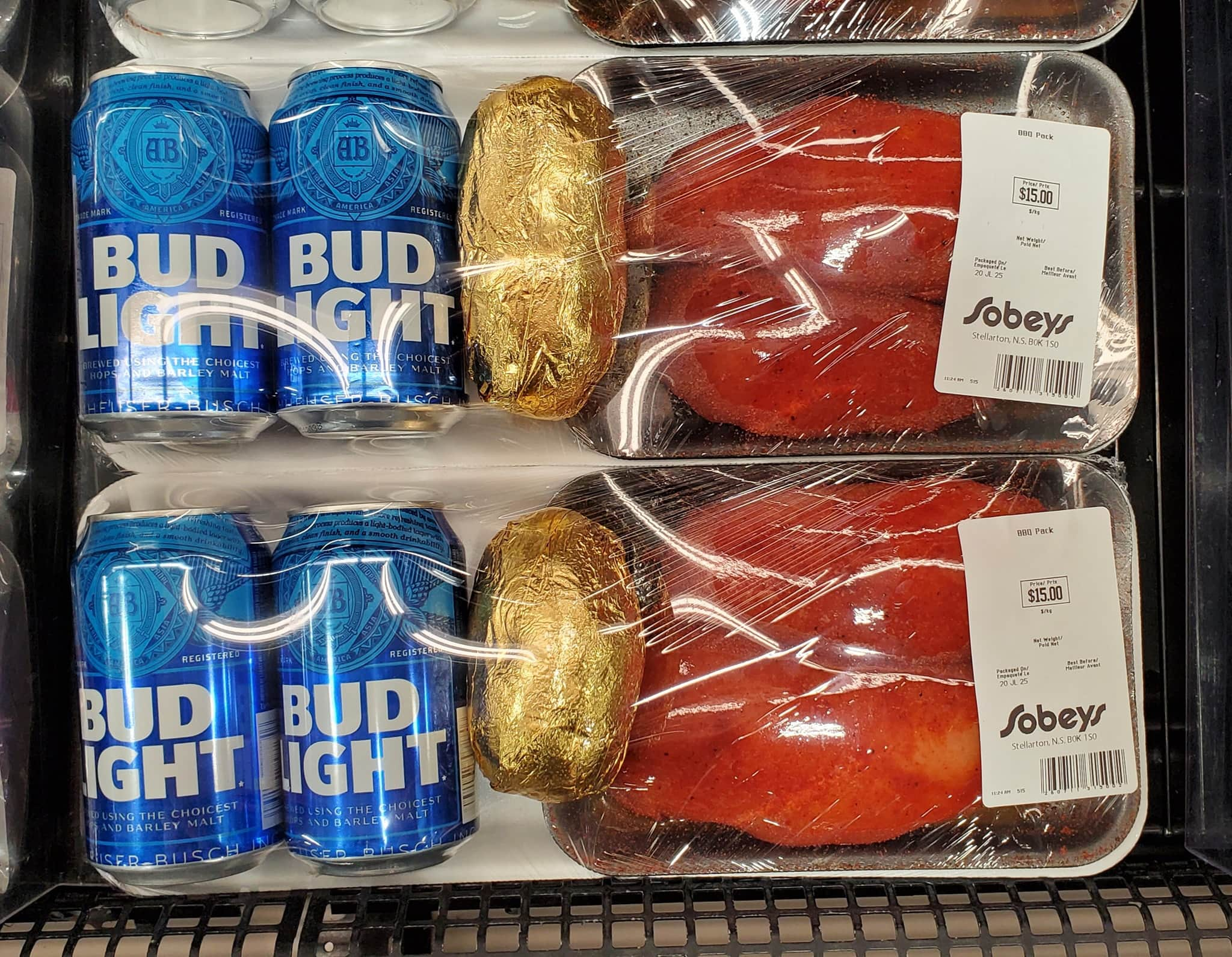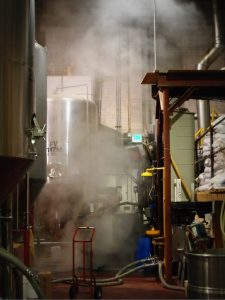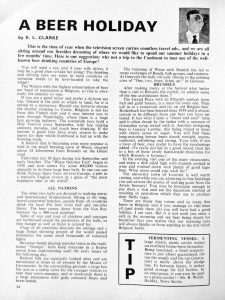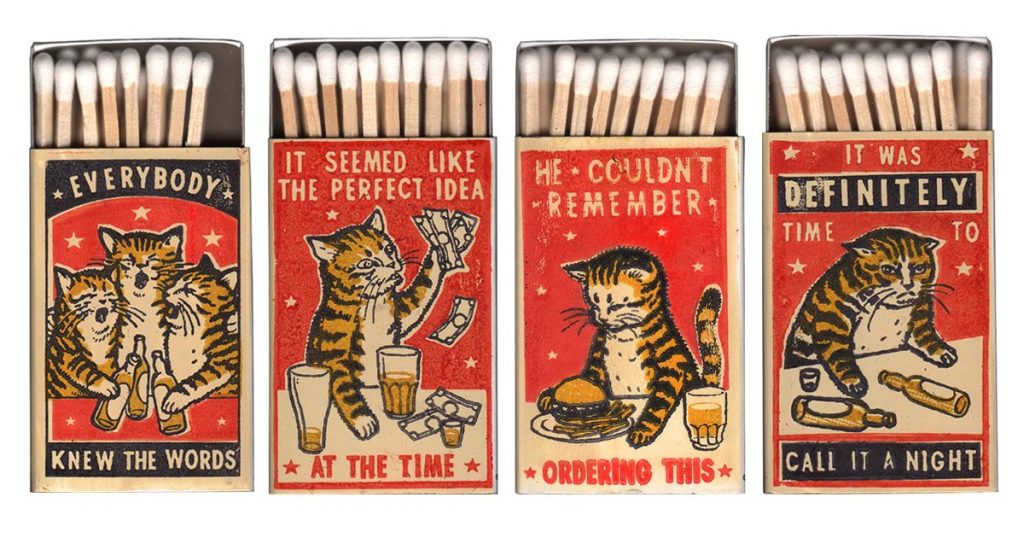After last week’s mess of unified theory of a something or other, it would be nice to find some chat that is (i) about beer and (ii) not about other things. You know, those bits of the trivial dribble that attracted me to scribbling about beer in the first place. It’s not just that good beer got into sectarian schisms, then politics, then laced with the pandemic – it’s that it all got so real. Don’t get me wrong, the real is good and important. But sometimes I like to wallow in, the vital but unimportant things in life. Like that really sad BBQ pack, above, that my pal Brian saw at a Maritime Canadian grocery store this week. Pointless… yet strangely compelling.
As a means to hopefully show what I mean, consider this wonderful bit by Katie in Pellicle on the place of burger vans in her life:
This is where I draw the line between burger vans and food trucks. For me, food trucks bring me images of gourmet falafel wraps, jackfruit tacos, outrageous fried chicken and homemade sauces. They’re run by chefs and dreamers on enthusiasm and aspiration, passion and excitement. I enjoy them, but they are a different beast. A burger van might also be a grill on wheels, but that’s where the comparisons stop. A burger van is a means to an end. The owners are chipper, but brisk and efficient. The sauces are bulk-bought and sharp with vinegar and citric acid.
Lovely writing about what is basically… well, is “…what my mum would call “a waste of money.” I have especially enjoyed following her family’s obsession with Superbike, something which really does not exist in my imaginary North America, something British which I only know through staring at 1930s racing championship programs on offer at eBay.
Beer reviews. That is pretty old school straight forward beer blogging, right? Well, Alistair over at Fuggled has renewed his blogging activity and shared his thoughts on one old friend, London Pride:
There are times when I drink this that I really understand why American brewers and drinkers have such a hard time grasping the fact bitter should be, well, bitter. It’s not that it is terribly sweet, though the mouthfeel feels a little like undissolved jelly cubes, it’s that the hops are nudged out by the famous Fuller’s yeast character, as well as not being the same kind of citrus as folks are used to here. So many breweries here use very clean top fermenting yeasts that the character of the beer is so different, and I wonder if American breweries under hop the tyle as a result?
And when the conscientious beer blogger is not writing reviews, she or he should be discussing pubs like the Tand himself did this week when he wrote about one of his “…favourite pubs in the UK, the Coalbrookdale Inn in, well Coalbrookdale…” and included this fabulous paragraph:
After a few minutes – the pub has a more or less square bar – the landlord shouted “Phone call for Peter”. We all ignored this. Now to explain to my younger reader, back in those days – pre mobile phone – it wasn’t at all unusual to call a pub and ask to speak to “whoever” if he is in. Now nobody knew we were there we thought and therefore the call out in a busy pub could not possibly be for any of us and could be safely ignored. We carried on supping. Having got no response, the barman returned to the phone, presumably to relate the lack of success to the caller. A few seconds later he appeared in front of us. “Any of you lads Peter Alexander?” quoth our hero. I stammered “Me” while we all looked on in astonishment. “Phone call for you” he said.
Do you like brewing history? Good news for all! The UK’s National Brewery Centre’s archives have gone online:
Two years ago a project began to produce a digital catalogue and this is what launches today. At a cost of £50,000, it was funded by generous grants from the likes of the Consolidated Charity of Burton on Trent, Staffordshire Community Foundation, the Campaign for Real Ale (CAMRA) and the Brewers’ Research Education Fund, additional funds were raised from corporate and individual donors as well as via a crowdfunding campaign. The archive system was designed and built by Shrewsbury-based digital heritage consultants Orangeleaf Systems, whose other projects include The Parliamentary Archives and the Royal Mail Archives.
More fabulousness!
Lars opened up a small can of worms in a very small pantry when he asked “What counts as a farmhouse ale?” in an actual blog post:
The most common question I get in interviews is “what do you consider to be a farmhouse ale?” and since the answer is a little involved I decided to write it up more fully. There is a fairly clear-cut definition, but it takes a little explaining.
I think the only issue is that Lars has to have one footnote to the first paragraph that reads “*supra, Lars” given he is both the reporter and the compiler of the information in the topic. I don’t necessarily agree with the idea that there is a thing called “farmhouse ales” which is an umbrella noun under which all styles fall. But I do like it as a process description that is identifying similar practices playing out in sheds and kitchens in disconnected locations. As a function of what the life of a farmhouse includes. As Lars notes in his piece:
In the 18th and the 19th Centuries, you had plenty of farming treatises being published. In most if not all of them you have a chapter on brewing.
Brewing as a farming function as much as managing the manure pile or tilling the fields. Note: the wonderful Girardin grows its own grain and has done so for generations… but it may not be brewing farmhouse ale.
Perhaps less monumental that van burgers or les bieres des shed, is the story told by B+B of pubs collecting pennies for charity in post-war Britain:
Looking through old brewery in-house magazines from the 1950s and 60s, one recurring image is inescapable: a monstrous pile of pennies on a bar, in the process of being toppled by a celebrity.
Jeff wrote about losing his blog’s sponsorship to Covid (sorta like I did in the aftermath of the market crash of 2008) which is a very brave admission and not really fabulous at all:
The first question was whether I should even continue with the site. Most writers don’t maintain blogs. They would rather put their effort into procuring and writing paid gigs. It was kind of crazy that I hadn’t monetized the site at all for its first decade, and I realized I couldn’t put the hours of work into it for free anymore. Either ditch it or—sorry for the crass jargon—monetize it. I decided to try the latter before resorting to the former, and considered how to do so in the way that would minimize my conflict of interest while maximizing revenue.
Keep the blog. Writing gigs may make money but the writing is Dullsville.
And lastly, Stan went into the woods this week and he sure got a big surprise.
Enough unreality for you? Fine. OK…. here are the top real news items for the week:
1. JJB took a side on the small brewers’ tax credit reforms in England and Wales. Matt is angry over the same thing.
2. Jeff has split off his political writing from his beer blog to share what he is seeing on the front lines of the fight in the US’s pro-democracy movement in his hometown.
3. Alcohol use, especially heavy use, weakens the immune system and thus reduces the ability to cope with infectious diseases.
4. And today would be a great day to arrest those who killed Breonna Taylor.
Don’t forget it is real out there. The cool sip of a mild legal intoxicant that is wearing down your internal organs prematurely should not distract you too much from the real. Beer isn’t real.*
There. Done. Some great pro-am and am beer writing for the week. A bit of a side show but, still, worthy in itself. For more, check in with Boak and Bailey most Saturdays, plus more at the OCBG Podcast on Tuesdays and sometimes on a Friday posts at The Fizz as well. And sign up for Katie’s weekly newsletter, too. Plus the venerable Full Pint podcast. And Fermentation Radio with Emma Inch. There’s the AfroBeerChick podcast as well! And have a look at Brewsround‘s take on the beer writing of the week. Not to mention Cabin Fever. And Ben has finally gone all 2009 and joined in with his own podcast, Beer and Badword.
*The latest blurt from Stone should be enough proof of that.


 Yuletide. Its been busy so far this month but after one last late evening meeting for work tonight I think I might be sliding into Yule proper. As I mentioned a few weeks ago, the days of the Christmas Yuletide Hogmanay Kwanzaa and Hanukkah Beery photo contest may be well past us but the archives go on and on. To the left is
Yuletide. Its been busy so far this month but after one last late evening meeting for work tonight I think I might be sliding into Yule proper. As I mentioned a few weeks ago, the days of the Christmas Yuletide Hogmanay Kwanzaa and Hanukkah Beery photo contest may be well past us but the archives go on and on. To the left is 

 I resemble that remark myself. And I even went to yet another bar this week. I never go to bars but last Friday for one at the
I resemble that remark myself. And I even went to yet another bar this week. I never go to bars but last Friday for one at the 








